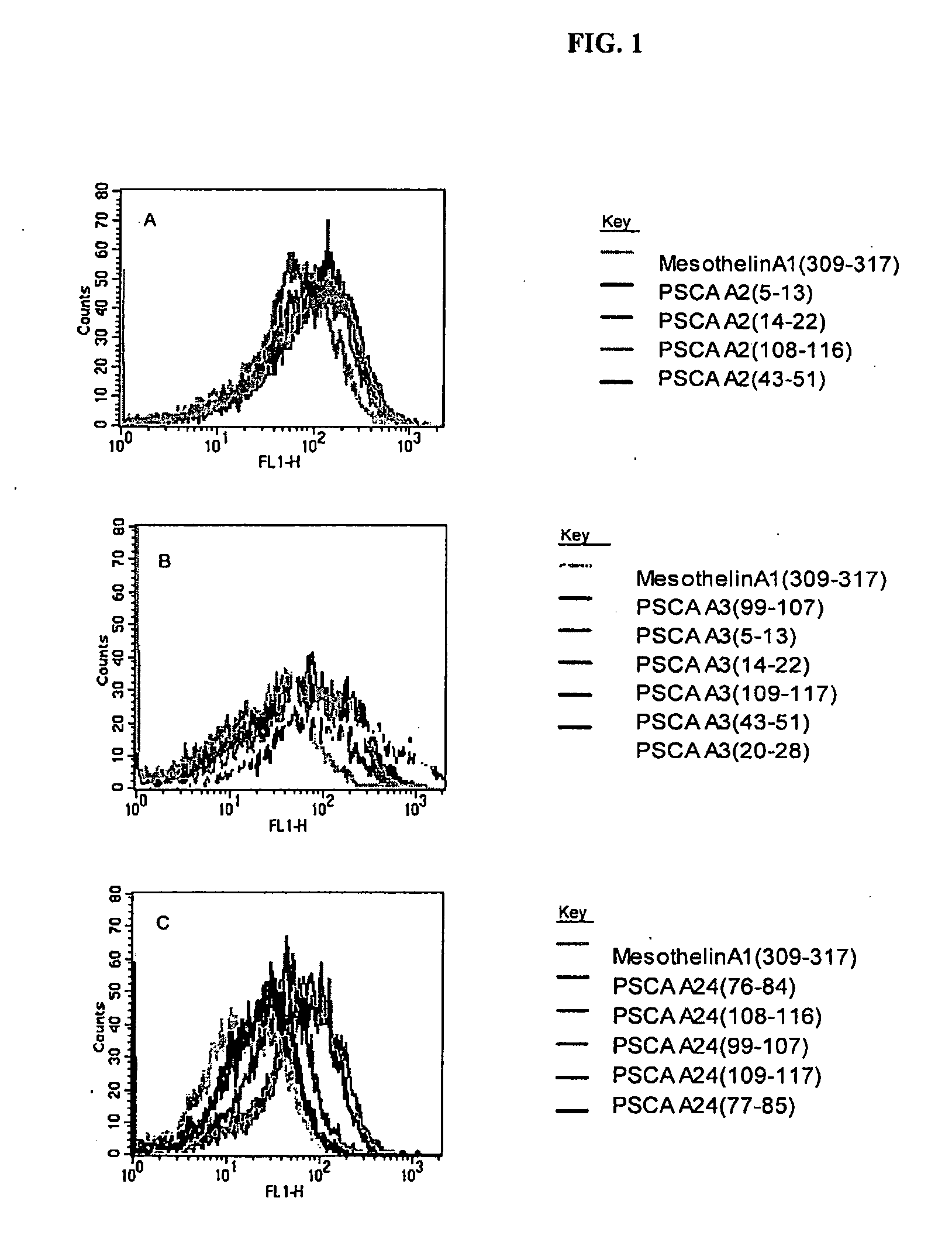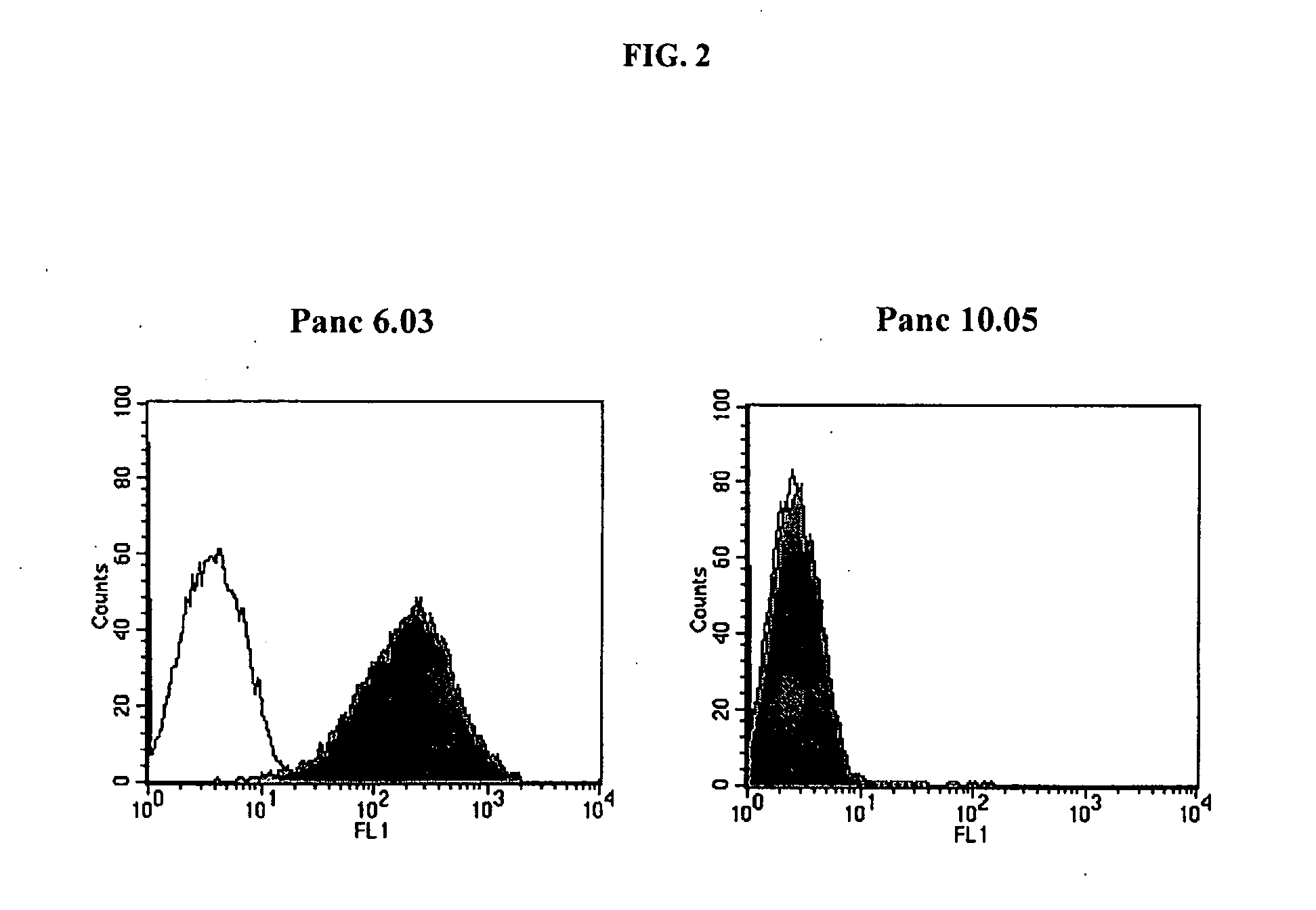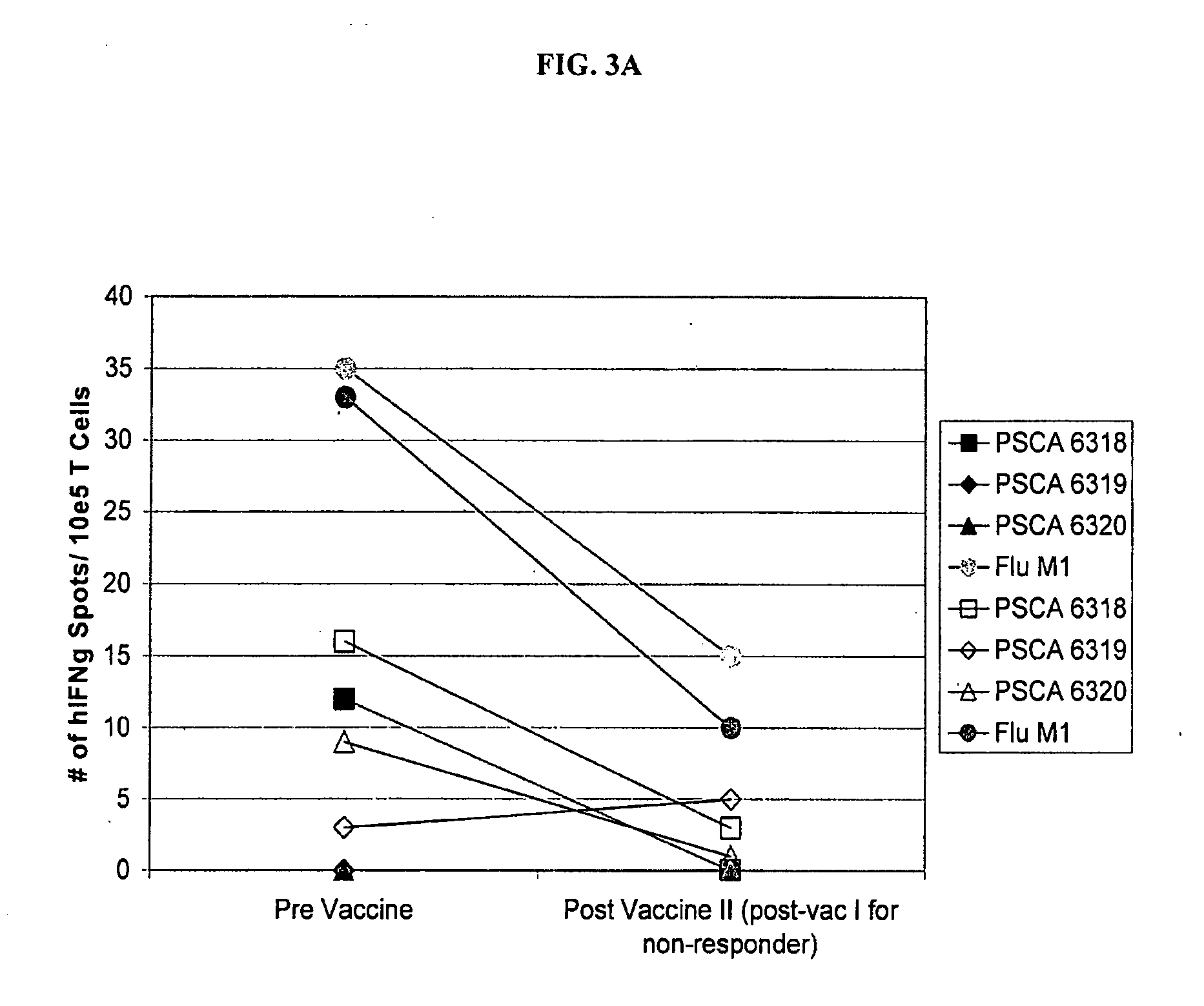Prostate stem cell antigen vaccines and uses thereof
a stem cell and antigen vaccine technology, applied in the field of cancer therapeutics and prognosis, can solve the problems of not necessarily correlating with clinically effective anti-cancer immune responses, restricting the number of antigens against which effective immune responses can be generated,
- Summary
- Abstract
- Description
- Claims
- Application Information
AI Technical Summary
Benefits of technology
Problems solved by technology
Method used
Image
Examples
example 1
[0214]To identify genes that can serve as immune targets for the majority of pancreatic adenocarcinoma patients, only those genes that were non-mutated, overexpressed by the majority of pancreatic cancer patients, and thought to be overexpressed by the vaccine cell lines, were focused on. One of these genes was PSCA.
[0215]A combination of two public use computer algorithms were used to predict peptide nonamers that bind to three common human leukocyte antigen (HLA)-class I molecules. The predictive algorithm “BIMAS”, ranks potential HLA binding epitopes according to the predictive half-time disassociation of peptide / HLA complexes. The “SYFPEITHI” algorithm ranks peptides according to a score that accounts for the presence of primary and secondary HLA-binding anchor residues. Both computerized algorithms score candidate epitopes based on amino acid sequences within a given protein that have similar binding motifs to previously published HLA binding epitopes.
[0216]PSCA peptides predic...
example 2
[0221]To determine if PSCA was recognized by CD8+ T cells, antigen-pulsed T2 cells were screened with CD8+ T cell enriched PBL from patients that have received an allogeneic GM-CSF secreting pancreatic tumor vaccine (Jaffee et al., J. of Clinical Oncology, 19:145-156 (2001). The patients treated on the reported vaccine study received an initial vaccination 8-10 weeks following pancreaticoduodenectomy and 4 weeks prior to receiving a six month course of adjuvant chemoradiation. Six of these patients remained disease-free at the end of the six months and received up to 3 more vaccinations given one month apart. The association of in vivo post-vaccination delayed type hypersensitivity (DTH) responses to autologous tumor in three of eight patients receiving the highest two doses of vaccine was previously reported. These “DTH responders” (each of whom had poor prognostic indicators at the time of primary surgical resection) are the only patients who remain clinically free of pancreatic c...
example 3
[0227]Flow cytometry analysis of PSCA expression by the two allogeneic vaccine cell lines used in the study was performed. The results are shown in FIG. 2. PSCA was found to only be expressed by one of the vaccine cell lines (Pane 6.03). The cell line, Pane 10.05, that didn't express PSCA had been cell line used in the first vaccination given to the patients in the study.
[0228]Materials and Methods. Flow cytometry. The expression of PSCA on the vaccine lines was evaluated by flow cytometric analysis. The vaccine lines were washed twice and resuspended in “FACS” buffer (HBSS supplemented with 1% PBS, 2% FBS, and 0.2% sodium azide), then stained with a PSCA-specific mouse monoclonal IgG1 antibody (clone 1G8) (gift from Dr. Robert E. Reiter, UCLA) followed by FITC-labeled goat anti-mouse IgG1 (BD PharMingen, San Jose, Calif.). Stained samples were analyzed using a FACS-Calibur flow cytometer (Becton Dickenson, San Jose, Calif.) and Cell Quest analysis software (Becton Dickenson, San Jo...
PUM
| Property | Measurement | Unit |
|---|---|---|
| median survival time | aaaaa | aaaaa |
| median survival time | aaaaa | aaaaa |
| median survival time | aaaaa | aaaaa |
Abstract
Description
Claims
Application Information
 Login to View More
Login to View More - R&D
- Intellectual Property
- Life Sciences
- Materials
- Tech Scout
- Unparalleled Data Quality
- Higher Quality Content
- 60% Fewer Hallucinations
Browse by: Latest US Patents, China's latest patents, Technical Efficacy Thesaurus, Application Domain, Technology Topic, Popular Technical Reports.
© 2025 PatSnap. All rights reserved.Legal|Privacy policy|Modern Slavery Act Transparency Statement|Sitemap|About US| Contact US: help@patsnap.com



